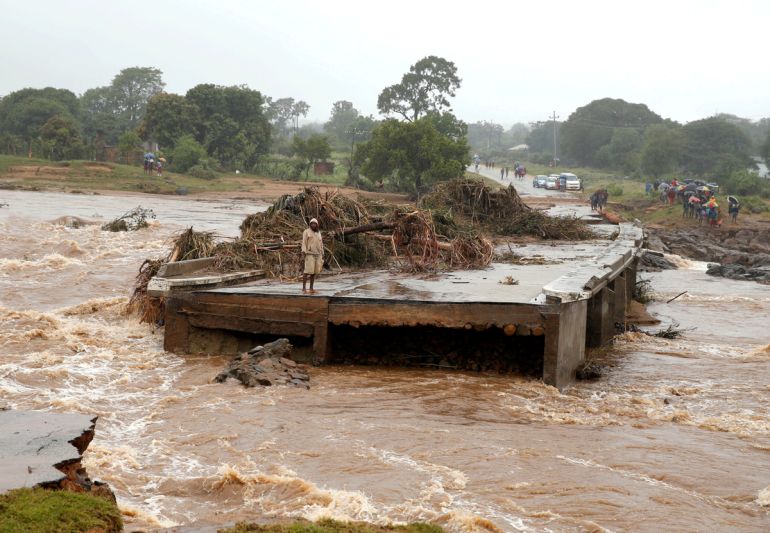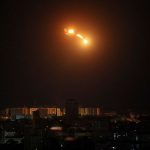Survivors say the government is yet to offer full compensation for the flooding that happened almost 10 years ago.
Harare, Zimbabwe – Every day for the past 10 years, Trymore Wadyachitsve has regretted living in Chingwizi, a community 500km (310 miles) south of Harare, the Zimbabwean capital.
Until February 13, 2014, he lived in the Tugwi Mukosi area 150km (90 miles) away from his home today. But then floods displaced 60,000 people in and around the area, which is home to the largest inland dam in the Southern African country – measuring 90.3 metres (296 ft) tall and creating a 1.75-billion-cubic-metre (385-billion-gallon) reservoir.
That day, the heaviest rain in 40 years fell, causing water levels at the dam to spike. The dam, still incomplete at the time, was breached, and many homesteads in the surrounding areas were flooded.
The government declared a state of emergency in the affected areas, launching rescue and relief efforts. The military also came with marching orders.
“The soldiers came and told us to leave, and we left,” Wadyachitsve, now 48, told Al Jazeera. “I thought I would be back after the floods.”
Those affected and at risk were relocated to sites like Chingwizi in Mwenezi District – about 2,500 households upstream of the dam and another 4,000 households downstream.
But the new location was no good, Wadyachitsve said. He said his old home was in a good area.
“The land had green pastures for the livestock. The sun was not as hot, and we had rivers close to us,” he said. “Life is very hard in Chingwizi.”
The mud and grass-thatched house he now lives in with his wife and five children is a far cry from his former home of 30 years in Tugwi Mukosi – a brick, asbestos-roofed, two-bedroom house. During windy periods, his current house is violently shaken, is damaged and requires repairs.

For years, droughts and changing rainfall patterns have contributed to water shortages in parts of rural and urban Zimbabwe, impacting agriculture, industry and domestic water supplies.
Climate change-induced droughts and events like 2019’s Cyclone Idai worsened things, leaving villagers at risk of starvation and in need of alternative water sources.
This was also the case in Tugwi Mukosi in southeastern Zimbabwe, which has long grappled with low rainfall. Completion of the dam, long touted as the solution to water scarcity, was also meant to provide irrigation and power a 12-megawatt hydroelectric plant on site.
Ultimately, the dam changed the lives of those living around it – but for the worse.
“Life is just hell here,” said Sonia Madhuva, a 40-year-old mother of four who now lives in Chingwizi. Before the flood, she owned more than 7 hectares (17 acres) of arable land. She said the government promised her 4 hectares (10 acres) during the displacement but she was given only 1 hectare (2.5 acres).
“I can’t grow anything to sustain myself on that land. They told us to take what was on offer,” she told Al Jazeera.
Many people in the area said they cannot grow cash crops or earn a living from the land. They have also lost most of their livestock because there is no land for animals to graze any more and drinking water is hard to get for the 20,000 displaced people at Chingwizi.
“The water is bitter, salty, and when you drink it, it’s hard to pass urine. The water is not good,” Wadyachitsve said.
Those who are displaced are still looking forward to the irrigation infrastructure promised by the government, for their new plots, so they can grow crops all year round and earn some much-needed income. They and their neighbours currently rely on pipes passing through the area that comes from a nearby ethanol and sugar cane plant.
“If we had irrigation, our lives would be better,” Madhuva said.
High school students have to walk almost 10km (6 miles) to get to the only school in the community, and it barely has any classrooms and has no toilet.
Additionally, early marriages are on the rise among high school students, Wadyachitsve said.



